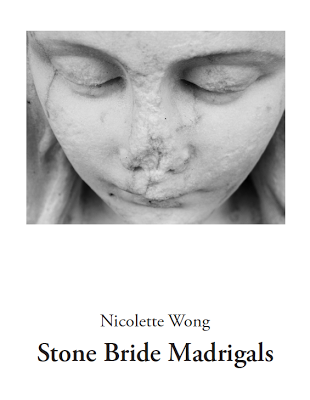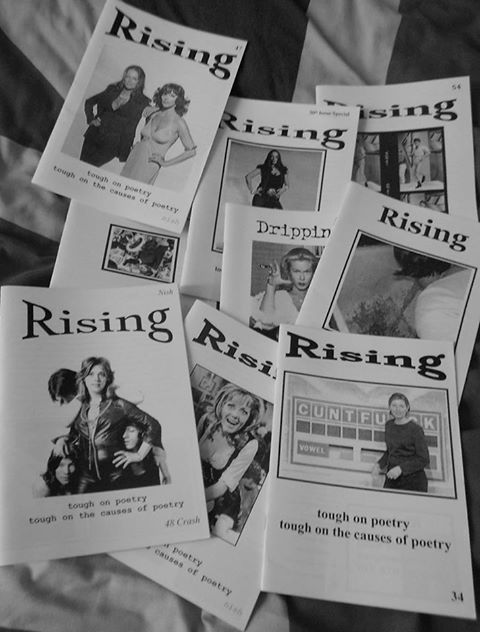‘How Esmeralda Estrus Got Her Revenge’ by J. Bradley
-Reviewed by Lindsey Holland–
What do the words ‘epic poem’ conjure up for you? Thoughts of gods, myths and battles – Beowulf, Homer, Dante and Milton perhaps? Maybe you think of Pound, Carlos Williams and Walcott, each of whom adapted and modernised the epic form. Most people probably don’t think of sex, vernacular language and frequent references to popular culture, all of which J. Bradley’s How Esmeralda Estrus Got Her Revenge has in abundance.
Bradley wrote the poem in response to a challenge: could he write a 300 line poem about a Byronesque, sexual, female adventurer? As an idea, it comes pre-packaged with 21st Century ideals but also with a historical context: Byron, like Odysseus, the larger than life male adventurer. The concept almost demands to be written as an epic poem but also to be dragged into the present day.
Bradley has embraced the challenge. This is fresh writing. It’s alive, gritty and believable but not without the depth and layers of reference you’d expect to find in epic poetry. Take the opening canto:
‘In the club, lapping at rum and Coke
like a wolf cub on its mother’s teat,
I see an ass that makes hands clutch
at the thought of grabbing a cheek.
On the dance floor, she twitches.
Oh no, Ian, it is not love that tears
apart my inseam. I step off the stool,
swagger to the dance floor and do
the I-only-want-to-do-you-in-the-face
dance so she’s not so scared of me.’
It’s typical of the way in which Bradley weaves unexpected images into a contemporary narrative. We’re immediately struck by the animalistic, but the wolf isn’t simply a predator, it’s a needy, instinctive, vulnerable infant. It’s only natural that the wolf questions the truth of Joy Division’s ‘Love Will Tear Us Apart’. We’re simultaneously aware, of course, that the narrator is no wolf. We later learn that his name is Derrick and, as we begin to see here, he’s a calculating individual who rationalises and adapts his behaviour as only humans can. Bradley continues to play with our emotions and ethics in this way throughout the poem, and does so to great effect.
Structurally, the pamphlet works both as a single narrative and as individual poems. Each canto is self-sufficient but put together they have far more resonance. There are two main narrators: Esmeralda and Derrick. We read their stories alternately, only briefly breaking away when Esmeralda’s gynaecologist and future self each narrate a canto. I find this effective. Neither character is allowed to become bogged down and our interest in them is maintained. It gives the reader a fun sense of omniscience verging on the voyeuristic. We’re forced to keep secrets, as when Esmeralda describes Derrick as a man whose ‘swagger and dance moves… make tourniquets look sexy’. Despite knowing this, we can only read and watch as Derrick continues in the belief that ‘She’s into me. I will make her face / like a belfry and make her moan / in sonar’. These are not poems that demand a constant dialogue with the reader. Instead, we’re asked to take a back seat and enjoy being entertained.
Desire and love are central themes and they’re at the heart of each canto, warring with one another. Esmeralda might reject Derrick in the club but she’s no stranger to sexual urges, to the extent that her future self visits like a Dickensian ghost to warn her:
‘I have become the ghost
the neighborhood children whisper about,
the monster beneath the bed; they almost
renamed gonorrhea after us. Your lust
is a train with a death wish, you forgot
how to test the worth of your lovers with just
a kiss’
This notion of ‘worth’ is a recurring one. Derrick later hopes to prove that he’s ‘worthy of knowing with our clothes on’ and Esmeralda comments in the final canto, ‘Boy, you’re not worth the man you’ve become’. Desire, we’re repeatedly told, is a ‘choke chain’ which, as the narrative progresses, seems increasingly incompatible with worthiness, and with the prospect of having children who ‘remember how we loved each other’. If I have any misgivings about the poem, they have to do with this. Both narrators ultimately break down into slightly predictable characters. Esmeralda finds a new type of strength toward the end of the narrative but she still hopes for ‘the giggle of children’ and yearns for love despite earlier saying that it ‘can tear us apart, / feed us to the ducks and foxes. We then have to walk / like we were incomplete, broken’. There’s a positive aspect to her transformation – she believes in love again – but part of me would have liked her to be more of a warrior: to behave, sexually, however she pleases and to make no apologies for it. I didn’t want notions of completeness, or desire for a family, to be involved in the equation. But maybe both characters are more believable for admitting to these impulses – less like epic gods or modern day superheroes and all the more earthly, honest and complex.
Take when Esmeralda tells us of her first love (of whom I won’t say too much – he provides an interesting plot twist):
‘It was so awkwardly beautiful. Then,
he cheated, called me a warm up,
a gateway drug, a practice snatch.
I snapped, almost carved this vow
into my wrists: never again. I wore
slut like a gold medal, collected hearts,
used condoms and tossed them behind
my shoulders like fuck-me-not bouquets’
Her behaviour is understandable, and not unusual. She’s a thoroughly modern, albeit damaged young woman and Derrick, in many ways, is similarly confused.
If desire, love and popular culture are key themes, there are also many subthemes. Violence, natural disasters, god and references to executions combine to create a threatening, darkly gritty atmosphere. It’s alleviated by a frequent sardonic humour. Both characters are amusing for the excess of their language and for their use of the vernacular, as when Esmeralda suggests that some men wield ‘dynamite like a golem’s gynecologist’ or when Derrick bathetically stops philosophising and comments that ‘I think she’s really into me’.
Overall, it’s a seething, dark romp of a poem. Accessible and fun, truthful and surprising, Bradley’s pamphlet hooked me from the start. I’m particularly reminded of Jane Holland’s Boudicca & Co. There are also similarities to some of Neil Rollinson’s work, perhaps with a side order of Eliot. This is a captivating poem for the 21st century. Anyone with an interest in contemporary, intelligent narrative poetry should buy this book.





Pingback: Crossover Appeal « Failure Loves Company